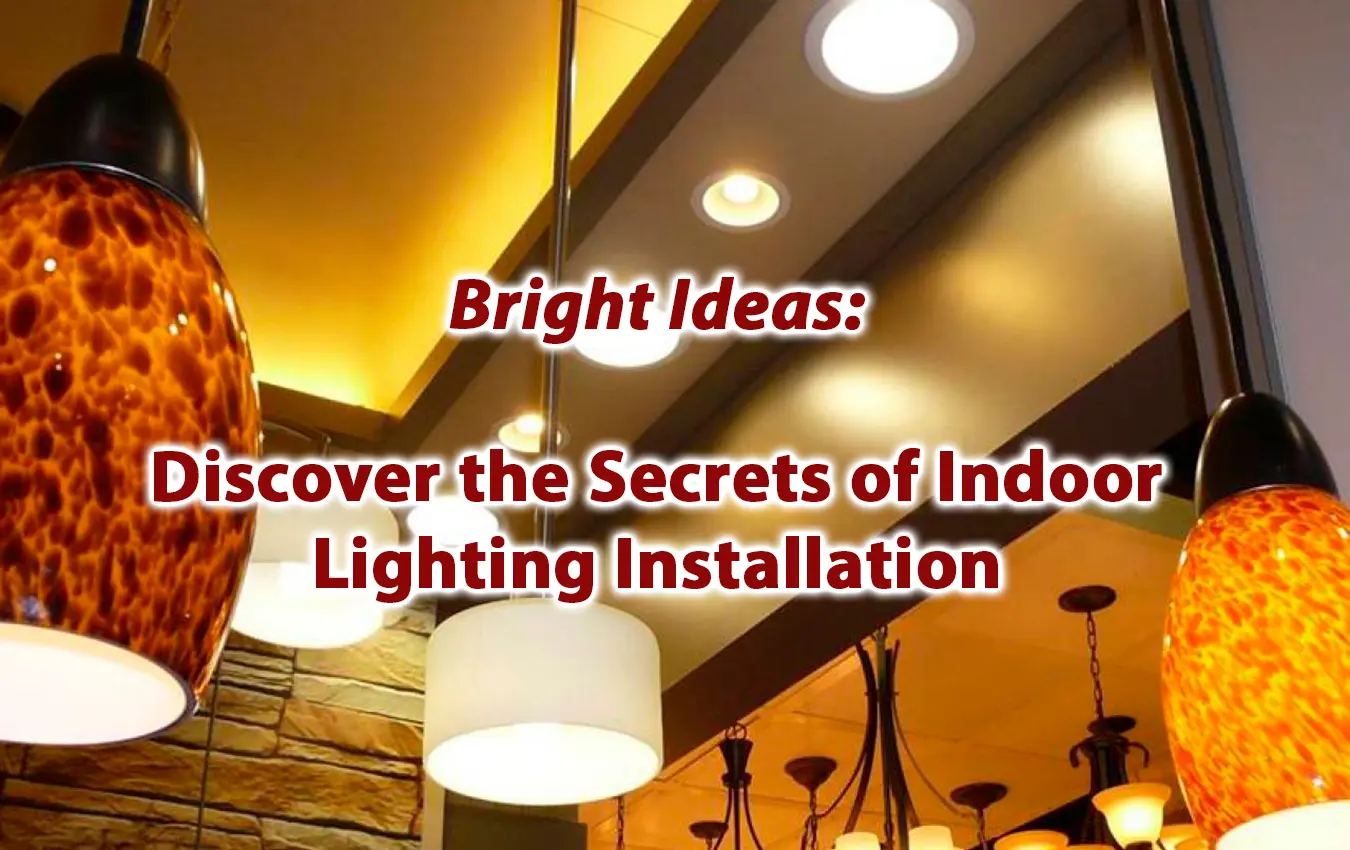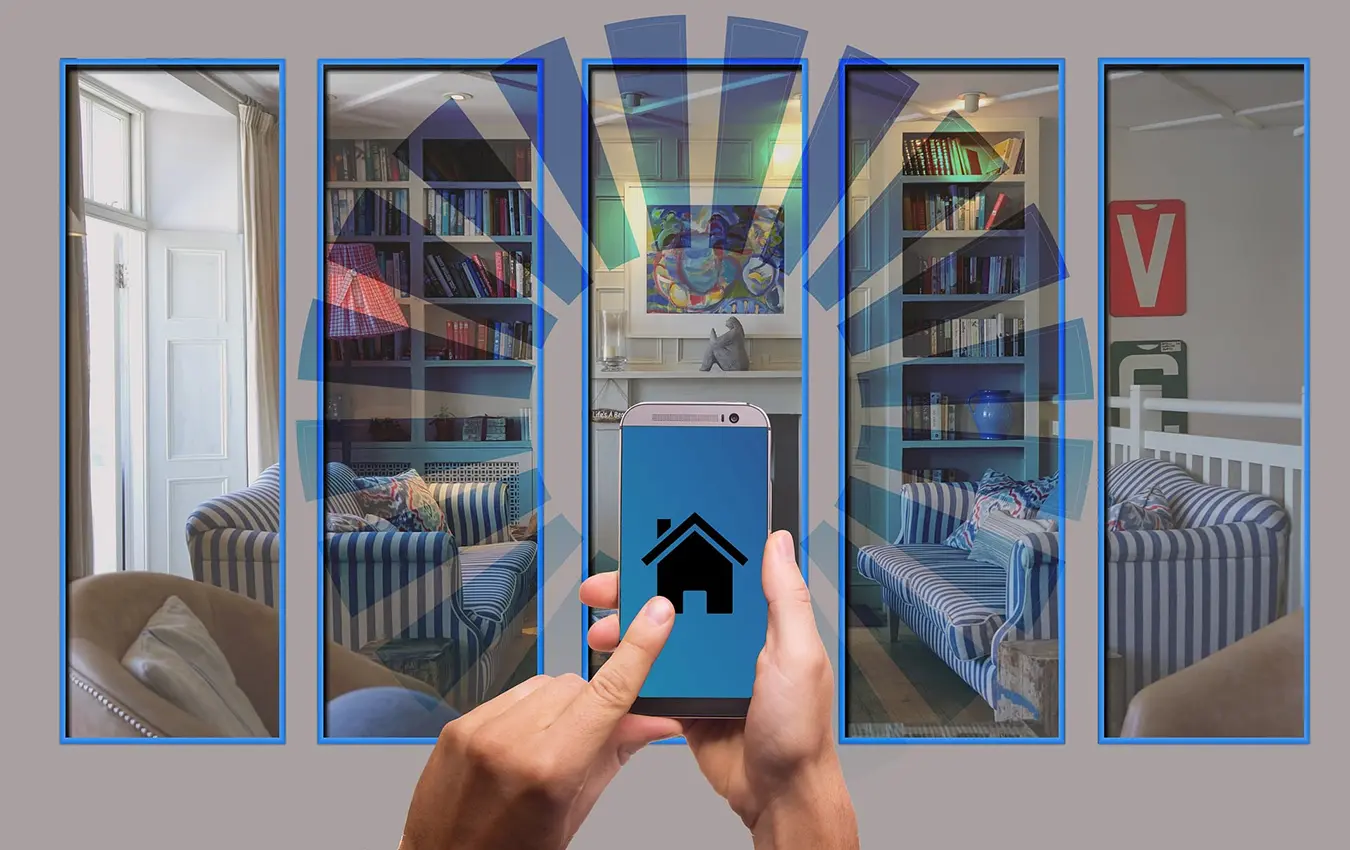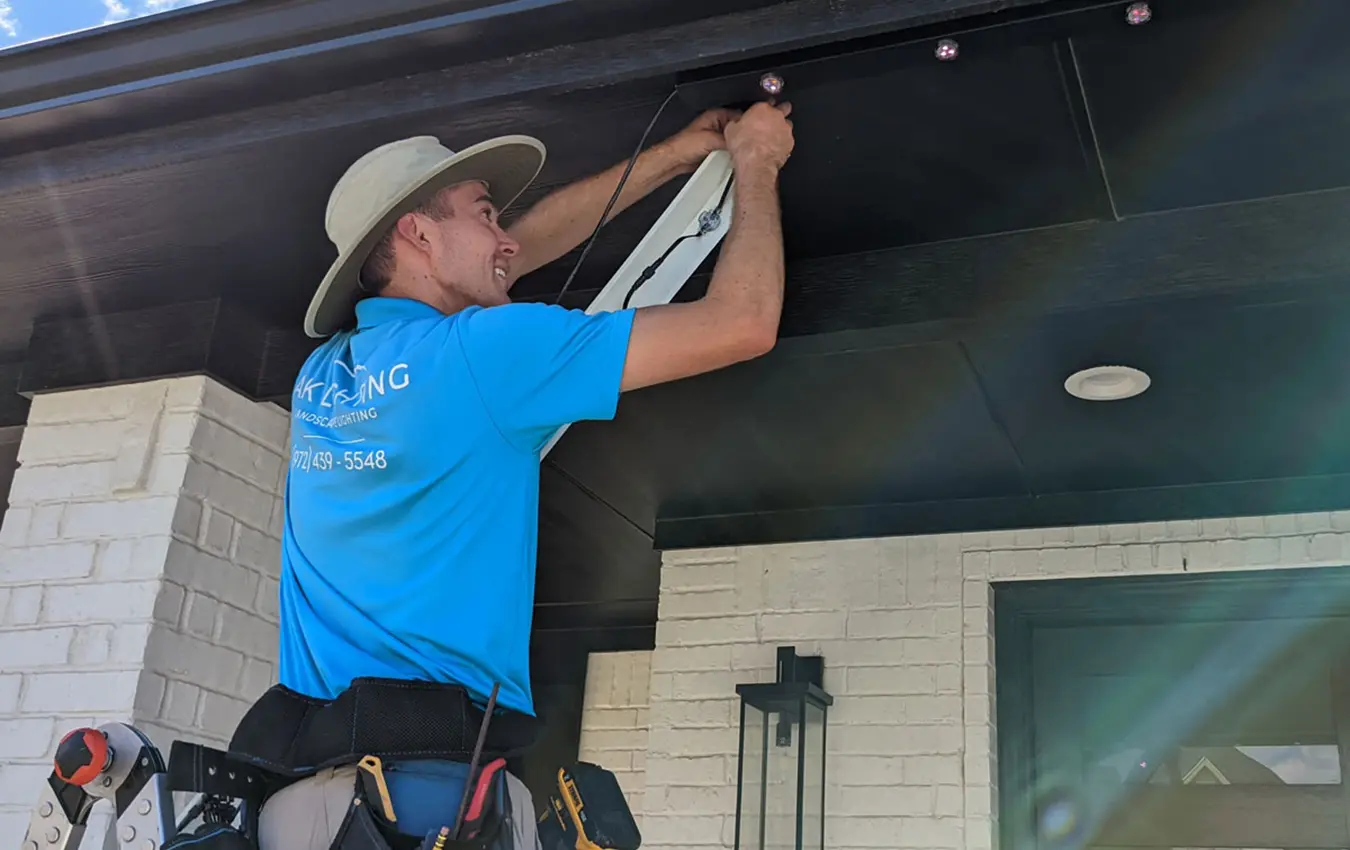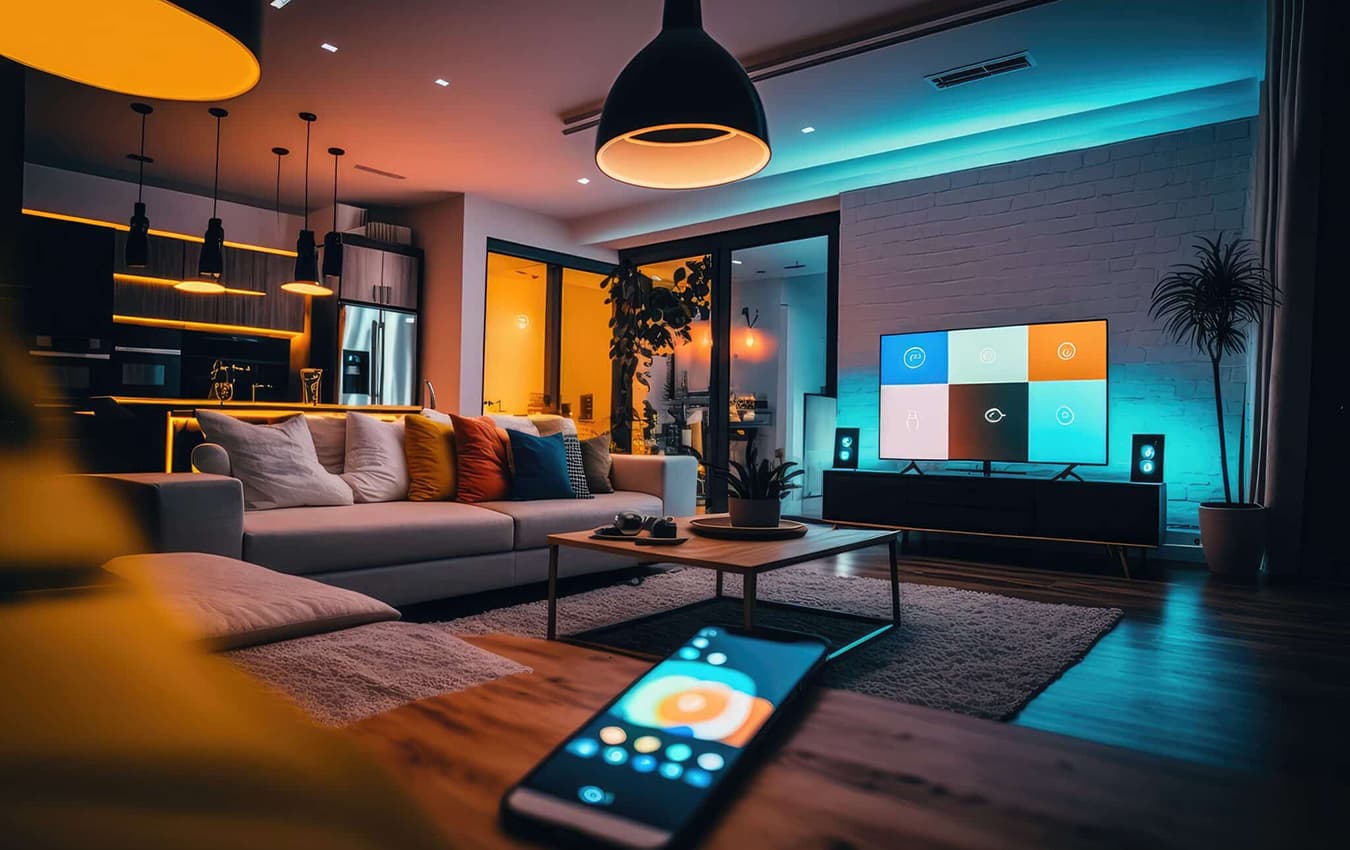Indoor lighting does more than light up our homes. It helps set the mood, improves the feel of a room, and makes our spaces comfortable. The right lights can show off the best parts of your home, help you do specific tasks, and even change how big a room looks. Choosing the right fixtures and installing them correctly is important. This ensures the lights work well and are safe to use. This article will guide you on indoor lighting installation. You’ll learn to create a well-lit, functional, and good-looking space.
Understanding Indoor Lighting
Indoor lighting comes in three main types: ambient, task, and accent. Each type has a particular purpose.
Ambient Lighting: This is your primary source of light in a room. It’s bright enough so you can move around safely. Ceiling lights, wall lights, and floor lamps are all examples of ambient lighting. Their job is to give steady light that’s easy on your eyes and makes the room feel welcoming.
Task Lighting: Ithelps you do specific things like reading, cooking, studying, or making art. It should be bright and clear, without any glare or shadows. Desk lamps, under-cabinet kitchen lights, and bathroom vanity lights are all task lights.
Accent Lighting: It highlights special features or objects in a room. It could be used to show off artwork, architectural details, or bookcases. It adds depth to a room and makes it more interesting. Track lights, spotlights, and picture lights are all types of accent lighting.
Each type of light has its purpose. Ambient light makes a room comfortable and safe. Task light helps you work and prevents eye strain. Accent light makes a room look good by highlighting its best features. Understanding these types will help you make good choices when you install indoor lighting.
Preparing for Installation
Once you’ve mapped out your lighting plan, it’s time to prepare for the actual indoor lighting installation. Gather the necessary tools and materials, ensure safety during the installation process, and accurately measure and position your lighting fixtures.
Gathering Necessary Tools and Materials
Before you start, make sure you have all the necessary tools and materials at hand. This includes screwdrivers, wire strippers, a drill, a ladder, electrical tape, wire connectors, and, of course, your chosen light fixtures. Having everything ready beforehand can save time and avoid unnecessary interruptions during the installation.
Safety Precautions During Installation
Safety should be your utmost priority when installing lighting fixtures. Always turn off the power at the circuit breaker before you start working with any wiring. Use a voltage tester to ensure no current is flowing through the wires you’ll be handling. If you’re not confident in your ability to safely handle the electrical aspects of the installation, don’t hesitate to hire a professional electrician.
Measuring and Positioning Lighting Fixtures
Proper positioning of lighting fixtures is crucial in achieving the desired lighting effect. Ensure that task lights are close enough to provide adequate illumination without causing shadows or glare. Accent lights should be positioned to highlight the intended features effectively. Ambient lights should be evenly spread to provide consistent illumination throughout the room. Use your lighting plan as a guide and take precise measurements to ensure accurate placement.
Step-by-Step Indoor Lighting Installation Guide
Now that you’re prepared, it’s time to start installing your indoor lighting fixtures. This guide will walk you through installing ceiling fixtures, wall-mounted fixtures, and recessed lighting.
Installing Ceiling Fixtures
Wiring and Connecting the Lighting Fixture: First, turn off the power at the circuit breaker. Connect the fixture wires to the house wires: usually, black to black (hot), white to white (neutral), and green or bare copper wire to the ground wire. Use wire connectors to secure these connections.
Mounting the Fixture onto the Ceiling: Attach the fixture base to the ceiling box using the mounting screws provided. Ensure the base is flush with the ceiling and the screws are tightly fastened. Then, attach the remaining parts of the fixture as per the manufacturer’s instructions.
Testing and Adjusting the Lighting: Restore power at the circuit breaker. Turn on the light to test if it’s working properly. Adjust the direction of the light if necessary.
Installing Wall-Mounted Fixtures
Wiring and Connecting the Fixture: Just like with the ceiling fixture, start by turning off the power. Connect the fixture wires to the house wires, securing them with wire connectors.
Mounting the Fixture on the Wall: Attach the fixture base to the wall box with the provided mounting screws. Ensure the fixture is level and secure. Attach any remaining parts of the fixture according to the manufacturer’s instructions.
Testing and Adjusting the Lighting: Turn the power back on at the circuit breaker and test the light. Adjust the positioning or angle of the light if necessary.
Installing Recessed Lighting
Cutting and Preparing the Openings: After turning off the power, use a template (usually provided with the fixture) to mark the areas on the ceiling where you’ll cut holes for the lights. Use a hole saw to cut out the marked areas.
Wiring and Connecting the Fixtures: Feed the fixture wires through the cable clamp in the junction box, then connect them to the house wires, as with previous fixtures.
Installing and Adjusting the Trim and Bulbs: Push the fixture up into the hole until its flange is tight to the ceiling. Install the light bulb, then adjust the trim and position of the light as needed.
Remember, always prioritize safety when working with electricity. If you’re unsure about any step in the process, consider hiring a professional electrician to help with the installation. With careful planning and execution, you can beautifully illuminate your indoor space.
Looking to enhance your home’s safety and aesthetic with professional lighting installation? Premier Electrical Services is here to help. We specialize in both indoor and outdoor lighting, offering a range of services from security lighting to chic chandeliers. Our team of licensed professionals provides fast responses, free assessments, and a 100% satisfaction guarantee. Don’t put your safety at risk with DIY electrical work — trust the experts at Premier Electrical Services. Light up your home today with our top-rated services. Call us now at 954-900-1696
Troubleshooting Common Issues
Even with careful planning and execution, you may encounter common issues with your indoor lighting installation. Here are some troubleshooting tips for flickering lights, dim or uneven lighting, and electrical problems.
Flickering Lights
Flickering lights are often caused by loose or defective bulbs. Try tightening the bulb in its socket or replace it if you suspect it’s faulty. If the problem persists, it could be an issue with the light fixture or electrical circuit. In such cases, it’s best to consult a professional electrician.
Dim or Uneven Lighting
If your room is not as brightly lit as you’d like, or if the lighting seems uneven, consider the following solutions. For dim lighting, you should increase the wattage of your bulbs (ensure your fixtures can handle the higher wattage). For uneven lighting, reassess your lighting layout. You should add more fixtures or reposition existing ones for a more balanced lighting scheme.
Dealing with Electrical Problems
Electrical problems, such as frequent tripping of circuit breakers or a persistent burning smell from a fixture, are serious matters that require immediate attention. Always turn off the power at the circuit breaker before investigating. If you cannot confidently identify and safely resolve the problem, call a professional electrician.
While minor troubleshooting can be handled independently, don’t hesitate to call in professionals when faced with severe or persistent issues.
Optimizing Indoor Lighting
To make the most of your indoor lighting installation, consider using advanced controls, incorporating natural light, and choosing the right bulbs to create the desired ambiance. Read on to learn how to optimize your indoor lighting.
Using Dimmers and Smart Lighting Controls: Dimmers allow you to adjust the brightness of your lights, providing greater control over your room’s ambiance. They can also help save energy by reducing the amount of electricity used when full brightness isn’t necessary. Smart lighting controls offer even more convenience and flexibility. With smart controls, you can operate your lights remotely using a smartphone app, set schedules to turn on and off, or even automate them based on your activity patterns.
Incorporating Natural Light Sources: Natural light is a valuable resource that can help enhance your indoor lighting. Large windows, skylights, and strategically placed mirrors can maximize the amount of daylight in your rooms. Consider the placement and intensity of natural light throughout the day when planning your lighting layout.
Choosing the Right Light Bulbs for Desired Ambiance: The color temperature and type of bulb you choose can significantly affect the ambiance of your room. For example, warm white bulbs (2700-3000K) can create a cozy, welcoming atmosphere, while cool white bulbs (3500-4100K) can provide a crisp, energetic vibe. LED bulbs are energy-efficient and long-lasting, making them an excellent choice for any room.
Indoor Lighting Trends and Innovations
The world of interior lighting is constantly evolving, with new trends and innovations emerging each year. Let’s take a look at some of the trends shaping indoor lighting in 2023.
Energy-Efficient Lighting Options
Energy efficiency is a significant trend in today’s lighting market. LED lights, which consume less energy and have a longer lifespan than traditional bulbs, are increasingly popular. They also offer superior brightness and color accuracy, making them an excellent choice for various indoor settings.
Smart Lighting Technology and Automation
Smart lighting systems are revolutionizing the way we illuminate our homes. These systems allow users to control their lights remotely via smartphone apps, automate lighting based on schedules or activity patterns, and even integrate with other smart home devices. This not only provides unprecedented convenience and flexibility but can also contribute to energy savings.
Sustainable and Eco-Friendly Lighting Solutions
Sustainability is another trend in indoor lighting. Many homeowners are opting for lighting solutions made from eco-friendly materials, such as woven grasses and other natural elements. Additionally, sustainable lighting practices, like using daylighting techniques to maximize natural light, are gaining traction.
Maintenance and Care
Proper maintenance and care of your indoor lighting systems not only ensure their longevity but also contribute to home safety. Here are some tips for cleaning and maintaining your lighting fixtures, replacing bulbs and parts, and conducting regular safety inspections.
Cleaning and Maintaining Lighting Fixtures
Dust and grime can accumulate on your lighting fixtures over time, reducing their brightness and potentially shortening their lifespan. Regularly dust your fixtures with a soft cloth or feather duster. For more thorough cleaning, remove the fixture if possible and wash it with a mild detergent or specialty cleaner, following the manufacturer’s instructions. Always make sure the light is turned off and cooled down before cleaning.
Replacing Bulbs and Parts When Necessary
Regularly check your bulbs for signs of wear and replace them as needed. Always use bulbs of the correct wattage to avoid overheating. If a part of your lighting fixture becomes damaged, such as a socket or shade, replace it promptly to prevent further damage or safety issues.
Regular Inspection for Safety Reasons
At least once a year, conduct a thorough inspection of your lighting system. Check for loose connections, frayed wires, or other potential electrical hazards. If you notice any issues, consult a professional electrician. Regular inspection can help you catch and rectify problems early, preventing potential accidents and ensuring the continued safe operation of your lights.
Conclusion
Indoor lighting installation can make your home bright, functional, and attractive. You’ll need to understand the different types of lights, prepare for installation, follow the guide, fix any problems, optimize your lights, and keep up with new trends. Indoor lighting can help you feel better, work better, and show off your style. Don’t be scared to try different lighting ideas. If you need help, contact Premier Electrical Services. We can handle any lighting project, no matter the size. Let us help you make your home brighter with our top-quality service and products. Call us now at: 954-900-1696
Check out the latest news:
- 5 Smart Home Upgrades to Increase Property Value in Fort Lauderdale
- Common Lighting Issues and How Professional Repairs Can Save You Money
- Smart Lighting Solutions for Energy Efficiency in Fort Lauderdale Homes
- The Latest Trends in Outdoor Lighting for 2024: Illuminating the Future
- Upgrading Your Home’s Electrical Panel: What You Need to Know






